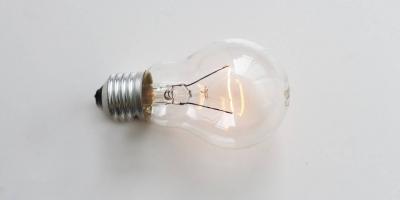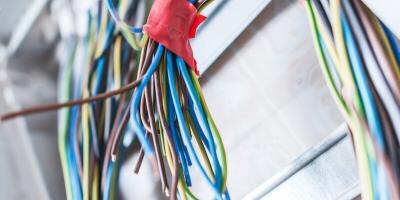The banning of incandescent bulbs from Sydney’s market left people with two choices for their lighting system ‒ fluorescent lamps and LEDs.
Needless to say, these two are always competing in terms of performance and efficiency.
Whether for home, landscape, or office use, these two have unique benefits to offer. However, before you pick your preferred bulb, it is crucial to know if it is the right one for the job.
Besides, modern LEDs and CFL bulbs come in wide varieties and choosing the right bulb will reward you in the long run.
That said, let us compare the pros and cons of LEDs and Fluorescent bulbs to give you ideas which one to choose.
Fluorescent Lamps
A Compact Fluorescent Lamp (CFL) is a low-pressure gas-discharge lamp that uses mercury and argon vapour to produce light. These gases release ultraviolet light when combined with electricity and cause the phosphor coating in the lamp to glow.
Furthermore, CFLs consume 70% less power and significantly longer lifespan than incandescent bulbs. On the other hand, a fluorescent lamp’s lifespan may decrease due to vibrations, high-humidity, and excessive on-off switching.
Pros of Fluorescent Lamps
- Fluorescent technology has been developed for over 100 years
- It is stable and is a reliable choice for your lighting solution
- Can efficiently provide good lighting over a wide area
Cons of Fluorescent Lamps
- CFLs take a few seconds to light up, making it unfit for instantaneous lighting
- Fluorescent lights contain toxic mercury
- Fluorescent lights significantly age when frequently switched on and off
- CFL bulbs have a considerable lighting inefficiency because they are omnidirectional
- Emits a small amount of UV radiation that causes colour fading of dyed items exposed to it
- Fluorescent lights need a ballast for a stable light. If it gets damaged, you may hear a buzz on the bulb.
Fluorescent Lamp Uses
Compact fluorescent lamps are commonly used in general lighting, particularly for warehouses, schools, and commercial buildings. Furthermore, fluorescent lights are practical replacement options for the phased-out incandescent bulbs.
But if you want your lighting to do sophisticated tasks such as mood-setting, strobes, or outdoor decorative lighting, the LED has a lot more to offer.
Light Emitting Diodes
A Light Emitting Diode (LED) is a semiconductor that emits light when electricity flows through. Moreover, unlike fluorescent lamps, an LED can provide instant lighting as well as dimmable features.
Since its launching, people have been shifting to LED bulbs primarily because of their efficiency and price when compared with CFL lamps. Moreover, LEDs emit significantly brighter lights that come in all shades and colours. Here are other pros as well as the cons of an LED bulb.
Pros of LED Bulbs
- LEDs can last up to 50,000 to 100,000 hours or more
- Shock-resistant and can withstand high and low temperatures
- It is directional, as it emits light for about 180° which improves light efficiency
- The LED technology is also energy efficient ‒ emitting very little infrared radiation
- LEDs emit high quality of light and have low maintenance costs
- A variety of shapes and colours allow you to set the mood for your room and landscape
Cons of LED Bulbs
While an LED bulb racks a lot of benefits, this technology also has a downside.
Particularly, LED lights cost higher than fluorescent lamps. That’s why you should consider its market price before opting for it.
However, its efficiency and performance will save you more money in the long run. Making it a viable choice if you want to invest in a lighting system that lasts.
Common Uses for LEDs
The first LEDs were used in computer motherboards. Since then, people have been using them for traffic lights, light-up signs, but most importantly, household lighting. Similar to fluorescent lamps, LEDs offer lighting solutions for gymnasiums, warehouses, and commercial buildings.
Additionally, you can see them used in road lighting, parking lots, and outdoor landscape lighting. This is because modern LEDs are developed to withstand physical stress and extreme weather conditions.
The Right Choice for Your Lighting
Generally, the LEDs have a lot more to offer compared with fluorescent lamps. But that doesn’t mean you should spend more on every single bulb you use.
For lighting small rooms that you don’t use very often (such as attics and basements), a fluorescent lamp will do just fine. However, for most lighting applications and outdoor systems, using LED lights is the best choice since you’ll benefit from its advantages and cost-efficiency in the long run.
Conclusion
A head-to-head comparison between compact fluorescent lamps (CFL) and light-emitting diodes (LED) gives you a clearer perspective about which one to use. Aside from that, the provided information implies how effective LEDs are for all sorts of lighting solutions.
However, whichever will you choose, you’ll need a level 2 electrician to tap into your electrical system and install a new lighting system or repair a faulty one. Gordon Powers is equipped with the skills and tools for a swift and efficient lighting installation service.
Our level 2 electricians will also identify faulty hotspots and repair them to protect you from electrical emergencies. We are available 24/7 to give you fast and efficient electrical services, all for the best price.
Team up with our Level 2 electricians today and call us at (02) 8378 2829.










